Posted by Steve Price on 09-05-2005 09:16 AM:
Image File Sizes
Hi People
We have a little discussion going on in another thread that
has lurched into a side issue about the optimal sizes of image files. Rather
than continue it as a digression there, I thought it might be useful to open it
as a separate topic.
Here are four images. They are identical except for
the amount of compression I used in saving them as JPGs. The file sizes are, in
order, 307 KB, 156 KB, 84 KB and 42 KB.




I'd like to know at
what points others can see loss of detail. I see no differences between the
first three images, but the fourth one (42 KB) has less detail than the others.
This is most obvious to me in the minor guls. My monitor is set to display 1024
x 768 pixels.
And, for those of you who know how to derive structural
information from images like these, I'd be grateful to learn what tkinds of
structural information you can get and what you have to be able to see in order
to get it.
Thanks,
Steve Price
Posted by Sue Zimmerman on 09-05-2005 03:32 PM:
Hi Steve,
I would like to help you but all of these examples are no good.
The good one is the second photo on your initial test. Sue
Posted by Steve Price on 09-05-2005 04:01 PM:
Hi Sue
The four images in the first post on this thread are all made
by converting the one you mention, which is a GIF file, to JPG files of various
levels of compression.
We are unlikely to change from using JPGs to
using GIFs, although it might be fun to compare them. Here, for convenience, is
the GIF followed by the least compressed JPG made from it.


But to get back to the
point of this thread: at what level of compression do people begin to see loss
of sharpness or loss of contrast in an image? My first post has four images, all
identical except for file size. How do they compare with each other to
you?
Regards
Steve Price
Posted by Don Ruyle on 09-05-2005 06:22 PM:
Hello Steve:
Your point is made very well and I appreciate your
efforts. The image size works well with my machine and it seems that the only
images I have had any trouble with are larger in file size than you ask for,
although they may also be from different servers, as I believe you have
indicated previously. Filiberto's workaround was the cure. Thanks for taking
this into a seperate discussion.
Don
Posted by Steve Price on 09-05-2005 06:39 PM:
Hi Don
Looking at the first four images in this thread: they start
with the largest file size and progressively are smaller. At what level do you
see loss of detail? As a reminder, in round numbers, the file sizes are (in KB):
350, 175, 85 and 42.
Regards
Steve Price
Posted by David R.E. Hunt on 09-05-2005 08:32 PM:
Hi Steve, Sue, Don
Regarding the four images above, they seen to
deteriorate in quality in descending order, but only in the last is there a real
distortion of figures in the image.
I confess a love affair with this
image business, but unfortunately with my job, the family, and my ongoing
restoration project I only have time to dabble, but it is fun. Maybe some day I
will be enabeled to assemble an apropropriately labeled and organized library of
rug images, suitable at least for my particular variety of carpet research ( if
you can call it that )
)
This compressaion and distortion of images lies behind my
propensity to use large images. This Ersari chuval, on thesecondpage of the "Small Tekke" thread, is an excellent
example of an image which doesn't lend itself to compression without a critical
loss of resolution. No matter how big or small, within the paramaters of what is
practical on Turkotek, this abrash is distorted to illegible. I circumvented
this by posting a link to a full size image on my server, which can be
downloaded and viewed as a high resolution image. These Gif images do seem to
have better color and definition, owning to those qualities outlined in
Filiberto's post, especially those illustrated by this image of a red ring in
the circle, and how the Gif file affects distortion and color contamination, but
of course the reproduction of carpet photos present special circumstances and
considerations, I would think.
Sue, just as with my characterization of
my use of rug photos as above, I don't believe we can do honest structural study
from photos. If nothing else, how do we go about substantiating our
obserervations? None the less, I do think we can learn a lot from large size
images, and I love'm  .
.
I you follow this Link
to a large scale image of the above small rug fragment from the Weidersperg
Collection, I think you will be suprised by the amount of detail, especially
considering that this is from a scan of a photo and not from a direct image. You
can see a lot, and I think much can be learned from this type of study, but I
don't know if I would refer to it as structural research. By the way, you might
be suprised at the prices of computers these days. I saw a reconditioned 120 GB,
512 RAM HP tower for under $500.00 the other day.
Only once on the
offending thread have I had problems with images, and with James' images for a
little while one morning. I have a fairly powerful computer and DSL, so maybe
that is the reason behind my lack of problems with the
thread.
Dave
]
Posted by Steve Price on 09-05-2005 09:18 PM:
Hi Dave
Your monitor has a set number of pixels for its display. I
don't know what yours is, but it's probably less than 1500 pixels in
width.
Mine is set for 1024 x 768. No matter how detailed an image file
may be, my monitor can't display it with any more detail than 1024 pixels for
the full screen width, about 500 pixels if the size of the image is set to be
half the width of my monitor. That is to say, there is a maximum resolution that
I can't exceed if looking at the image on my monitor is my method of seeing it.
But even that is a hypothetical maximum. I sit far enough from my monitor to be
unable to see individual pixels. Most other people do, too.
It simply
isn't true that any compression of an image file, no matter how minor, results
in loss of visible detail. The question I'm trying to get a handle on is, how
much compression does it take to reach that threshold for other people. I know
about how much it is for me: an image of an object with the detail seen in a
fairly fine Turkmen small rug, 400 pixel image width, compressed to 42 KB, is
less sharp than the same image at 85 KB. But increasing the file size beyond 85
KB offers no discernable improvement.
Using the four images I posted as
subjects, where is that point for you? If you see a difference between the 350
KB image and the 175 KB image, perhaps the optimum for you is considerably above
the 350 KB point. Is it?
I'd really like to know how this plays out for
a lot of people, since it has implications for how we handle images
here.
Regards
Steve Price
Posted by Don Ruyle on 09-05-2005 10:03 PM:
Hello Steve:
For my money, the third image is is as good as the first
two, even when I copy to pps and zoom in. even though, when I look real close, I
can see a gradual detioration from one to three. I think I see all that needs be
seen in #3. The fourth image shows considerable degradation and doesn't provide
enough clarity of line and the colors become "fuzzy". Clearly, the image that
Dave linked might serve for Sue's purposes and dave's "love affair" with size,
but considering the 25% increase in the membership, and the time to down load a
page of images so large, I can live with the 85kb image. I can cypher real good.
Lets see, Jethro: 0+0=0.
Regards, Don
Posted by Tim Adam on 09-06-2005 08:58 AM:
Hi Steve,
In my opinion any of the four images will do for most of the
rugs that are discussed on Turkotek. In particular, I think it would be a waste
of time and effort to post high resolution images of rugs that generate just a
couple of responses. If a piece generates a lot of interest, or if it is
qualitatively an outstanding piece, then I think it would be nice if high
resolution images could be made available, e.g., in a special folder somewhere
for downloading. So, my suggestion is to make high resolution images available
"on demand."
Regards,
Tim
Posted by David R.E. Hunt on 09-06-2005 10:35 AM:
Images Part II
Hi Steve
All but the last image are fine with me. It's in this last on
I see distortion, specifically of those three double kockak figures at the base
of the field and adjacent to the guard stripes. Or is my astigmatism getting
worse?
Hi Tim
I agree that in general any of the images (with the
exception of #4) suffice on Turkotek, yet sometimes, as with my illustration
above with the Ersari chuval, a larger image is required to illustrate a point
or idea. Hence my linking to large file sources outside Turkotek. Of course, if
the clamoring crowds demand, I will post a large scale file  .
.
Hi Don
You might
want to seriously consider investing in a new computer. Prices on even 200GB
models are within the range of most anybody, and the difference is astounding.
At just 80 GB, my computer makes my wife's 40 GB seem like a dinosaur.
Dave
Posted by Steve Price on 09-06-2005 11:13 AM:
Hi Dave
One very inexpensive way to upgrade a computer is to salvage
parts from the one you have and just buy what you need. The monitor, keyboard,
mouse, floppy drive, CD drive, network adapters, etc. are almost always OK. The
existing hard drive is probably big enough to use as a backup drive, and moving
it to a new machine makes the files that are on it available if you need them (I
delete them after a respectable interval). Bear in mind, too, that the operating
system amounts to around $100 of the price of a new machine. If you still have
the installation CD for your current operating system (and if it's a decent
system like Windows 2000 Pro), you can install it in the new machine.
Not
too long ago I did this, building a 2.8 GHz P-4 with 1 GB RAM, decent sound and
video cards, and a few bells and whistles, at a cost of around $400.
Construction is easy - everything plugs into everything else with connectors
that won't go in with the wrong orientation.
Since the topic here is
image file sizes, I should point out that very few peoples' ability to see the
images well or download them rapidly are limited by their computers if they have
enough RAM (which is very inexpensive unless your motherboard is too old to
accept the newer sticks).
Regards
Steve Price
Posted by Don Ruyle on 09-06-2005 07:08 PM:
Hi Dave:
No. I really don't need much more computer but I do
seriously need the new video card. Six months after the computer was built, The
maker of the video card went belly-up and so, My S3 Savage is operating with the
only aftermarket patch available and it causes enough problems to warant
replacing it with the e-Ge-Force FX5500. While I have the box open, I'll add
256kb of ram (doubling it). Then I can plug in this nice 19" monitor that was
free and have almost twice the fun! All for about $100. Boy! That from someone
who vowed not to become computer literate until 2000 and managed to actually
live without one until November of 2001! I haven't learned much in 4 years
either, but I enjoy this site.
The problem with James' and Dave's images
failing to display after having displayed well at first, probably is in the fact
that I seem to remember deleating my cookies sometime in that same time span. (I
think that has something to do with what Filiberto said earlier.) The fix that
Filiberto sugested, worked great.
Regards: Don
Posted by David R.E. Hunt on 09-07-2005 08:45 AM:
Incompetence= Hire Someone
Hi Don
My advice was geared more toward someone with my level of
incompetency . I
tried to upgrade an old computer some time ago, and by the time I was finished I
had a computer which didn't quite work right yet had cost me as much as buying
one straight from the box. But I was just trying to wing it, instead of doing my
background research, ect. Steve is right, RAM is the primary factor here (I
think
. I
tried to upgrade an old computer some time ago, and by the time I was finished I
had a computer which didn't quite work right yet had cost me as much as buying
one straight from the box. But I was just trying to wing it, instead of doing my
background research, ect. Steve is right, RAM is the primary factor here (I
think  ). I don't
think cookies are the problem, however. I have at times been unable to log onto
Turkotek, but have never had problems with images. But with the dinosaur I tried
to upgrade, that's another story. The problems I had with my experiment in
retrofitting were along the lines of compatability. Cost of the formentioned HP
tower, 2000GB x 512 RAM reconditioned, about $500.00. I paid almost $800.00 for
my 80GB x 512 RAM three years ago, just to give an idea where retail prices have
gone.
). I don't
think cookies are the problem, however. I have at times been unable to log onto
Turkotek, but have never had problems with images. But with the dinosaur I tried
to upgrade, that's another story. The problems I had with my experiment in
retrofitting were along the lines of compatability. Cost of the formentioned HP
tower, 2000GB x 512 RAM reconditioned, about $500.00. I paid almost $800.00 for
my 80GB x 512 RAM three years ago, just to give an idea where retail prices have
gone.
Dave
Posted by Steve Price on 09-07-2005 09:18 AM:
Hi Dave
Compatability issues arise with upgrades to an old computer,
but are easy to avoid when building a new one. Many vendors sell "barebones"
systems, in which you select specific components from a menu of options (case,
power supply, motherboard, processor, RAM, etc.), omitting what you don't need.
Most will assemble and test the parts that are ordered together. In my case, the
items listed in this message were ordered and arrived assembled. I added drives,
sound and video cards, monitor, keyboard, mouse, speakers, and my old operating
system.
A little preliminary research is helpful. The internet is full
of useful information about computer hardware and how to install
it.
Regards
Steve Price
Posted by Chuck Wagner on 09-07-2005 09:36 PM:
Decisions decisions...
Hi all,
It's always nice to have several examples to work with when
discussing image management, so here they are.
Some comments up
front:
The JPEG compression algorithm is very efficient, but because it
is a "lossy" method (it throws away some of the data), it tends to cause certain
image characteristics to be more strongly affected than others by compression.
Areas with very little variation tend to compress quite well, but areas with
lots of detail ( frequent color and contrast transitions) do not.
The
algorithm uses windowing (multipixel) functions, and a sort of averaging is
performed that can cause blocky artifacts in regions of monotonous appearance
(such as large areas of variable but similar color), and sharp edges or thin
sharp lines, can become degraded and fuzzy.
In addition, because JPEG
compression is "lossy", it is a bad idea to compress a file more than once;
image degradation is enhanced by iterative file compression.
So, some
thought needs to go into how you prepare your images for posting. Do your edits,
resizing, and color manipulations up front and do the compression as the final
step, saving into a separate file. Then check the file size, because if it's too
big Our Moderator is likely to compress it again and the image may suffer
as a result.
Here are some examples to consider when thinking about file
compression, showing several images typical of Turkotek posts.
All
images have been prepared using Irfanview. Compression occurs as a part of the
SAVE or SAVE AS functions, and is separate from the RESIZE function in the IMAGE
pull down menu.
So, when discussing compression levels, I refer to the
parameter appearing in the JPEG/GIF options dialog panel in the Irfanview SAVE
AS function, which specifies the percentage of the original file size remaining
after compression. Thus, 75% means a compression target of 25% reduction
in file size.
I hope these examples help you decide which level of
compression fits best with the features you are trying to highlight with your
images.
Hat tip to Steve, who has been very generous with disk
space.
The first two examples are closeup shots showing good detail.
Images were resized down to 33% prior to compression. Compression levels, in
order, are 100%, 75%, 50%, 37%, and 25%. At 50%, artifacts are barely beginning
to appear. 37% and 25% have noticable degradation:
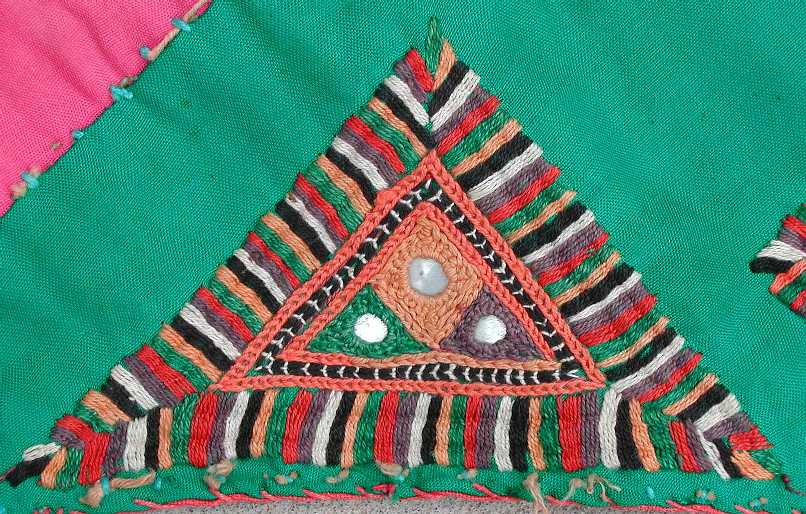
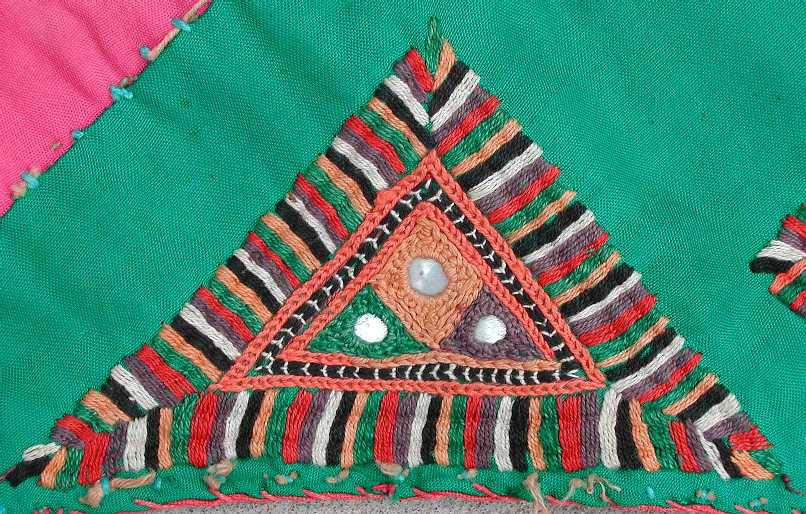








The next example is a direct scan showing extreme detail.
No resizing was performed prior to compression. Compression levels, in order,
are 100%, 75%, 50%, and 25%:
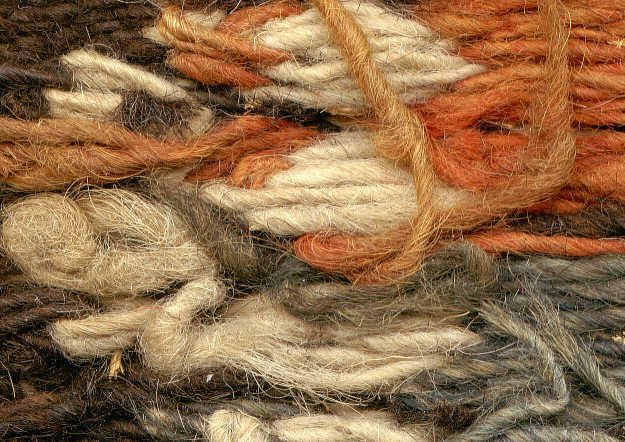
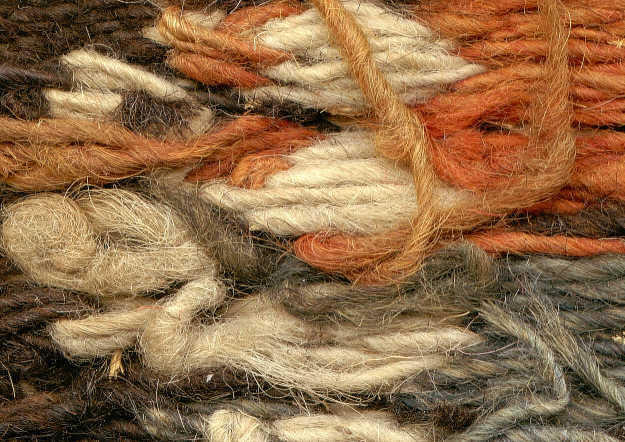

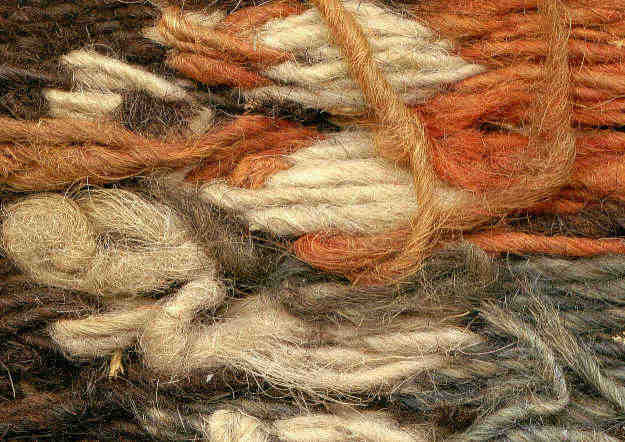
The next two examples are shots of entire pieces with large
areas of similar color. Images were resized down to 33% prior to compression.
Compression levels, in order, are 100%, 75%, 50%, and 25%. You can see the
blotchy appearance starting to show up at 50%:




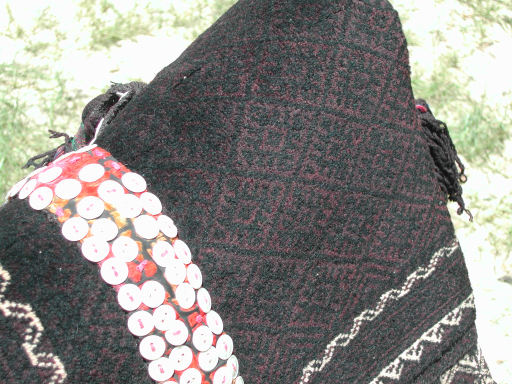



------------------------------------------------------------------------------
A
set of large images was at this location in the original post. It has been moved
to a separate post, noting Filiberto's comment, to make this one easier to
read.
---------------------------------------------------------------------------
The
next set of images is from the same master as those above, but resized down to
485 X 646 pixels prior to compression. Compression levels, in order, are 100%,
75%, 50%, and 25%. The alternating black & white bands on the tassles and
the upper left red-orange area show artifacts as compression
increases:




The last
set of images shows the effect of compressing a file that has already been
compressed once. Error due to data loss accumulates and degrades the image
severely.
As often repeated in the Middle East, YOU NO DO THIS
ONE!.
The first has been compressed once, to 75%:

The second has
been compressed to 75%, and then again to 50%:
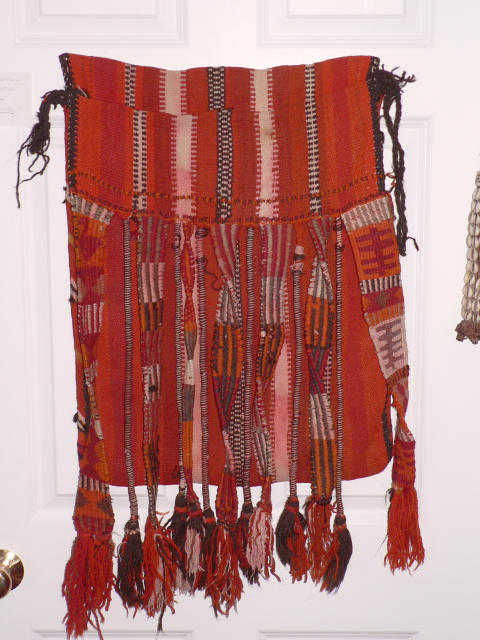
The third
has been compressed to 75%, then to 50%, and then to 25%. Not a pretty
picture:

__________________
Chuck
Wagner
Posted by Filiberto Boncompagni on 09-08-2005 01:41 AM:
Thanks Chuck,
A couple of considerations.
When you write
“Compression levels, in order, are 100%, 75%, 50%, and 25%” it could be
misleading. You refer to the Resize/Resample option in Irfanview, followed by
“Percentage of original”.
So 100% (of the original) really means NO
compression at all, 75% of the original means 25% compression and so
on…
An undesirable consequence of using images wider than, say, 55O or
650 pixels (depending on which display mode you use, the most common being 800 x
600) is that they make the page too wide. The text follows the width and we are
obliged to scroll it horizontally in order to see it. You used widths up to 960
pixels and the result is evident. That’s why it’s better not exceeding the width
of 550 pixels for our images.
Regards,
Filiberto
Posted by Filiberto Boncompagni on 09-08-2005 01:50 AM:
Another undesirable consequence of using big images – as we saw in the other
thread, but it’s more evident here and now – is that, even on a fast connection,
the browser takes a lot of time to download them.
Quod erat
demonstrandum. 
Regards,
Filiberto
Posted by Chuck Wagner on 09-08-2005 07:49 AM:
Large images now in separate post, here.
Hi all,
Noting Filiberto's comments, I edited the original
post
(rather than put the whole thing in twice) and made more
explicit
additions to the comments on compression in Irfanview.
These are the
large images moved from the previous post.
The next set of images have
been resized down to 50% prior to
compression from a very large 5 megapixel
original. Compression
levels, in order, are 100%, 75%, 50%, 25%, and 15%. The
large
areas of similar reds & oranges suffer greatly as
compression
increases. Becase the detail features are physically bigger
than
in the following example sets, some degradation of detail is
also
apparent, in particular the texture of the flatweave
sections:




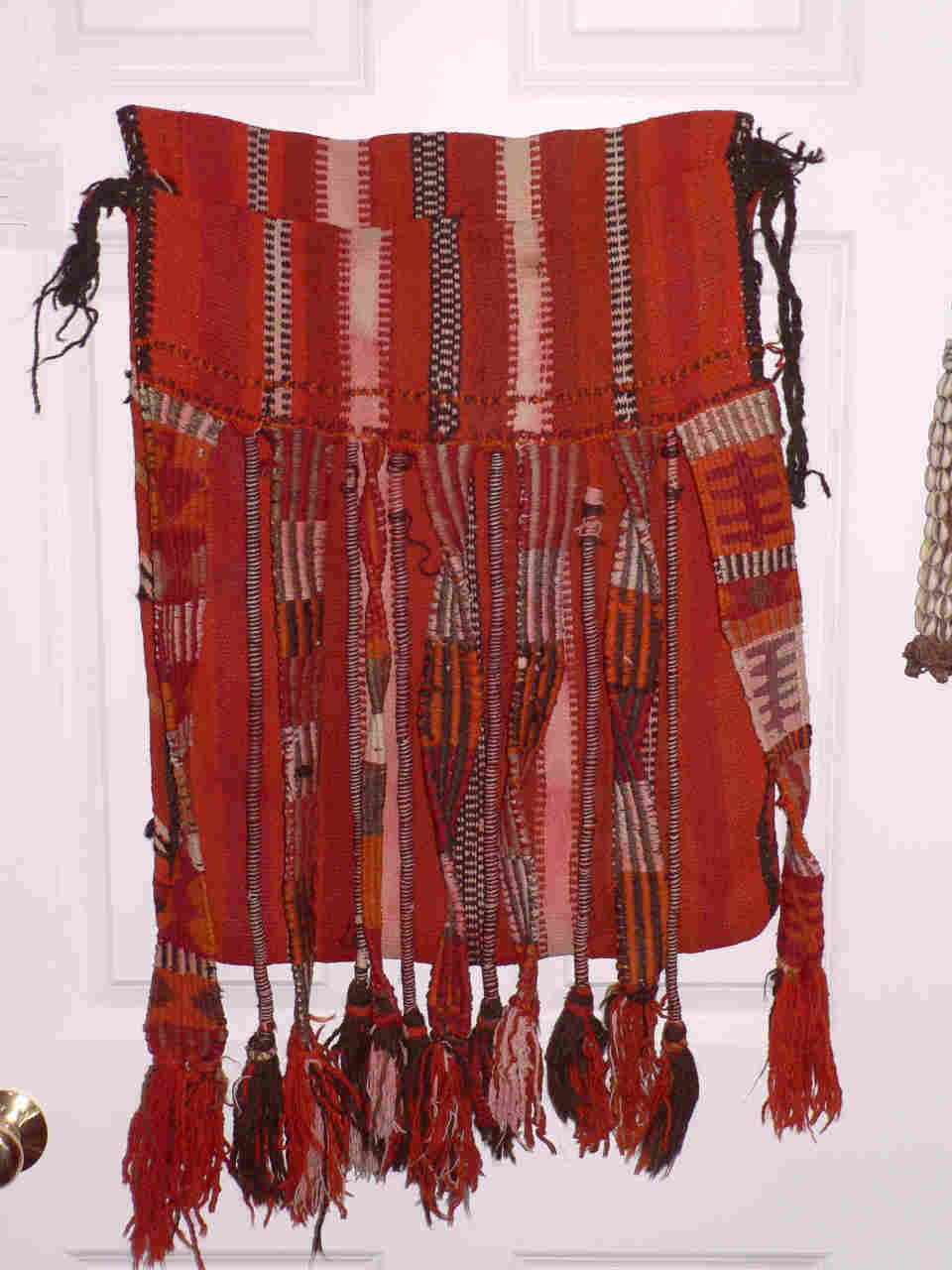
__________________
Chuck
Wagner
Posted by Jerry Silverman on 09-09-2005 02:47 AM:
All of this is very interesting, but I've got to admit that I can scarcely
make out any difference between the images that are not compressed and those
that are extremely compressed. To be sure it's there if one looks really, really
closely. But even the most compressed is sufficient to convey the needed
information for the purposes of the discussions here. Most of the defects of the
highly compressed images could be minimized by holding the camera closer to the
object. (My Nikon Coolpix 4500 - already obsolete - can focus to 3/4". On a
tripod it's easy to do.)
I can't see where our existing policy on holding
images to under 100k needs to be changed.
Cordially,
-Jerry-
Posted by Chuck Wagner on 09-10-2005 09:30 AM:
Hi Jerry,
These additional mages were posted to provide additional
examples for folks to review, not to make a case for using larger images.
Although I occasionally carp about wishing to use large images, I'm almost
always satisfied with the 100K limits.
Those few occasions where larger
images are considered important can be handled with additional explanatory text
in the image submission email sent to the moderators.
As an aside, using
Irfanview to toggle back and forth between two images can be a very instructive
exercise. Although it is true that differences are difficult to perceive when
viewing images side by side, they become screamingly obvious when using what is
called the "blink comparator" approach. Irfanview moves from one image file to
the next (in a folder) with a slight rotation of the mouse wheel, allowing you
can switch rapidly from one image to another. Subtle changes become very visible
this way.
Regards,
Chuck
__________________
Chuck
Wagner
Posted by Steve Price on 09-10-2005 10:39 AM:
Hi Chuck
Great detail can be displayed with small image files by using
selectively cropped images to show those details. If someone wants to see
individual knots, he doesn't need an image of more than a couple of square
inches of the rug to see them.
I use a variant of your Irfanview method
to flip back and forth between images in he same spot. I download them from the
web page (right click on the image, select "Save Image", then open them in
Internet Explorer, which lets you have more than one copy running at a time.
A mouse click then lets me toggle between them. Makes small differences very
obvious.
Regards
Steve Price





 )
) .
. .
. ). I don't
think cookies are the problem, however. I have at times been unable to log onto
Turkotek, but have never had problems with images. But with the dinosaur I tried
to upgrade, that's another story. The problems I had with my experiment in
retrofitting were along the lines of compatability. Cost of the formentioned HP
tower, 2000GB x 512 RAM reconditioned, about $500.00. I paid almost $800.00 for
my 80GB x 512 RAM three years ago, just to give an idea where retail prices have
gone.
). I don't
think cookies are the problem, however. I have at times been unable to log onto
Turkotek, but have never had problems with images. But with the dinosaur I tried
to upgrade, that's another story. The problems I had with my experiment in
retrofitting were along the lines of compatability. Cost of the formentioned HP
tower, 2000GB x 512 RAM reconditioned, about $500.00. I paid almost $800.00 for
my 80GB x 512 RAM three years ago, just to give an idea where retail prices have
gone.
































